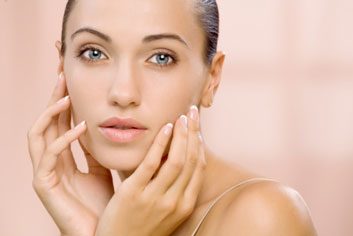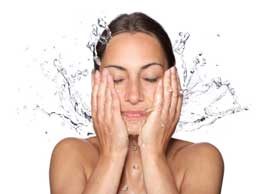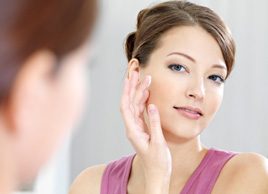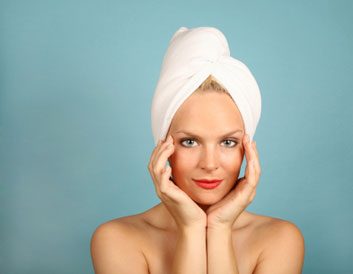
The future of skin care
Over time, skin tone can appear uneven, thanks to sun or liver spots (lentigines), freckling (ephilides), dark patches (melasma) or rosacea, all of which can be intensified by sun exposure. While many of us may worry about wrinkles as a sign of age, Dr. Renier van Aardt, a family physician who practises cosmetic medicine in Truro, N.S., says female patients bring up skin tone more than they used to. “There’s more awareness of it now,” he says.
That’s where laser and other treatments by medical specialists come in. When it comes to patchy skin pigmentation, there’s a limit to what improvements we can get from products containing vitamin C or A, peptides, or the bleaching ingredient hydroquinone. Same with home-use laser devices, says Vancouver dermatologist Dr. Jason Rivers, who is also a clinical professor in the department of dermatology at the University of British Columbia. “They will help in terms of fine lines, but not so much for brown spots.” Today there are non-invasive breakthrough procedures available at the doctor’s office that can help to even out your complexion-with less time spent hiding at home with a swollen, red face than you might expect.
Paradoxical as it sounds, most of these improvements work on the principle of damaging your skin: “If you can wound the skin in a controlled way, for most people it will respond by increasing blood flow and skin turnover, and regenerating collagen,” says Dr. Anthony Lockwood, a plastic surgeon in Winnipeg. This healing process often reduces pigmentation from sun damage or age.
But before you go for it, get an explanation for your skin pigmentation from a medical doctor. Changes to skin tone don’t all have the same cause or occur at the same depth. And they can’t all be dealt with in the same way. In fact, your skin can react to inappropriate treatment with even deeper colouring, called hyperpigmentation. Another reason to be assessed properly? “Sometimes people will go for laser treatment, and what they thought was an innocuous brown spot turns out to be melanoma,” Rivers says.

Safety first
Right now, cosmetic laser use in Canada isn’t restricted to doctors. According to a recent Canadian Dermatology Association (CDA) survey, nearly three quarters of Canadian dermatologists have seen patients with injuries or burns after getting laser or intense pulsed light (IPL) treatments from non-physicians, such as salon staff. “People are not assessed properly and are told they can have treatment, or the devices are used at the wrong settings, and then burns happen,” says Rivers.
The CDA advises people to speak to a primary care physician for a referral to a dermatologist or other physician with formal laser training. If you decide to skip the doctor’s referral, Rivers cautions, “you should ask what the person’s qualifications are, what their training has been, and whether they belong to any professional societies.” (More safety tips are available on Health Canada’s website.)
If you have a non-Caucasian skin tone, adds van Aardt, “the physician should be knowledgeable in darker skin types.” Without expert care, treatments can backfire, causing hyperpigmentation instead of evening out skin tone.

Non-ablative light therapy (also called photofacial and photorejuvenation)
Tiny pulses of light do their work by heating tissue beneath the surface. There are various devices now in use in Canada, but the most popular by far is the broadband IPL, because of its versatility.
What it’s for: It can improve superficial (not deep) brown pigmentation and rosacea/redness in lighter-skinned people. “Darker-skinned people are more prone to getting a burn from light-based technologies, so you have to use different techniques,” says Lockwood, such as chemical peels and topical products. The heat can also trigger hyperpigmentation in dark skin.
What happens: A hand-held machine delivers pulses of bright light to your skin, while you wear dark goggles and a cold protective gel on your face. The pulses may feel like gentle stings.
What to expect: Avoid sun exposure beforehand or you risk burning and change in colouring. Usually three or four treatments are required a month apart, then once or twice a year for maintenance. “Sunspots may turn darker brown before they peel off in two or three days, or even a week or more,” says Lockwood.

Fractional laser resurfacing
Fractional lasers are able to direct hundreds of points of hot light to portions of the skin, leaving tissue in the other portions untouched. These are replacing older CO2 lasers, which were painful with longer recovery times. A fractional laser can be either ablative (which punches tiny holes in the skin) or non-ablative (which heats channels of tissue without puncturing the skin).
What it’s for: “It will take off some surface sun freckles,” says Lockwood, “but it will also remove some dead skin and improve texture-and you might get a bit of tightening. So it will help a little with tone, texture and tightening.”
What happens: As with IPL, you’ll wear eye protection and the practitioner will use a hand-held device. Depending on the type and strength of the laser, you may feel only a mild heat during the procedure, or you may need a topical anesthetic. Afterwards, it may feel and look like a sunburn.
What to expect: Healing can be a few days. But downtime and maintenance vary depending on the potency of the laser. With aggressive treatment, it might be two weeks before swelling, redness and pain subside. It involves multiple treatments (often two or three), but you don’t need regular treatments after that.

Fractional laser resurfacing
Fractional lasers are able to direct hundreds of points of hot light to portions of the skin, leaving tissue in the other portions untouched. These are replacing older CO2 lasers, which were painful with longer recovery times. A fractional laser can be either ablative (which punches tiny holes in the skin) or non-ablative (which heats channels of tissue without puncturing the skin).
What it’s for: “It will take off some surface sun freckles,” says Lockwood, “but it will also remove some dead skin and improve texture-and you might get a bit of tightening. So it will help a little with tone, texture and tightening.”
What happens: As with IPL, you’ll wear eye protection and the practitioner will use a hand-held device. Depending on the type and strength of the laser, you may feel only a mild heat during the procedure, or you may need a topical anesthetic. Afterwards, it may feel and look like a sunburn.
What to expect: Healing can be a few days. But downtime and maintenance vary depending on the potency of the laser. With aggressive treatment, it might be two weeks before swelling, redness and pain subside. It involves multiple treatments (often two or three), but you don’t need regular treatments after that.

Microdermabrasion
Not to be confused with the more painful and invasive dermabrasion for scars, microdermabrasion involves spraying mineral crystals to gently exfoliate the skin. It’s not painful and there’s no downtime.
What it’s for: It treats sun pigmentation at the surface of the skin. It will even out tone and smooth skin, and is appropriate for all skin colours.
What happens: The patient wears eye-cup protection while the practitioner moves a wand across the skin, spraying fine crystals that are then vaccuumed away. It may feel prickly, and rough like sand on your skin.
What to expect: You may see some red lines that fade within days. Deeper pigmentation won’t be treated and will eventually rise to the surface, so effects are temporary. It requires six weekly treatments, then one to two treatments per month maintenance.

Chemical abrasion (also called chemical peel)
The practitioner applies chemical acid solutions such as glycolic acid and fruit acids onto your face to remove the skin surface.
What it’s for: It can improve various skin tones, often suiting people with darker skin and/or melasma, which may not respond well to light-based technologies.
What happens: Mild peels are typically 15 to 25 percent acid solutions and are often performed by an esthetician. Higher-strength peels may prickle or burn. Lighter peels can feel quite soothing.
What to expect: “Most peels have no recovery time at all,” says van Aardt. “Only the deeper peels do, and those you do very selectively at long intervals.” A light peel can be repeated once a month.

The cost
Costs for these procedures range widely, depending on which treatment is right for you-chemical peels, for example, are less expensive than laser/light therapies. You may also pay a premium to see a specialist, like a dermatologist, versus a GP, says Rivers, noting: “It could be a couple of hundred dollars if you’re treating one or two spots, or $1,000 or $1,500 per treatment if you are treating the whole face.” Talk to your doctor about your options.
Related:
• Your guide to laser treatment
• 5 foods to eat for healthy, glowing skin
• Skin care from the sea: Does it work?
